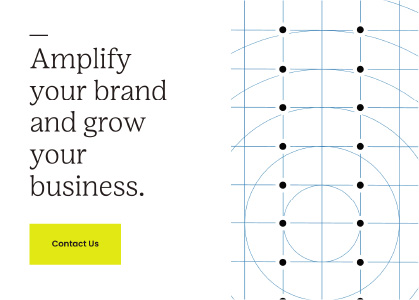Over 30 years, AvreaFoster has responded to hundreds of RFPs and I’ve been a part of shaping nearly all of them. Throughout the years, we’ve learned a thing or two about what makes a good — and a bad — RFP. Here’s some advice for B2B marketing teams embarking on the RFP process.
What Do Successful RFPs Have in Common?
RFI or RFP?
Businesses might consider an RFI (request for information) if they’re notifying agencies about a future RFP (request for proposal) or if they need very specialized information to identify agencies as candidates. Most companies can bypass RFIs by creating a simple grid of “must-haves.” For instance, ask yourself: Do you require experience in your industry? A specific capability? Local presence? A focus on B2B branding and marketing? This data can be found on agency websites and client lists. Conversations with colleagues and referrals are invaluable.
There are some potential pitfalls. Recently, I spoke with an executive who sent an RFI to 10 agencies. He confessed that he hadn’t thought about how long it would take his team to read the responses. They could have saved a lot of time for themselves and the agencies by narrowing the list and streamlining the information they requested.
You’re ready to launch your RFP when you’ve done your homework and identified a short roster of potential agency partners. The most effective RFPs start with five or six agencies in a precisely managed process.
Comparing Apples to Apples
THE MORE STRUCTURED AND COMPLETE THE RFP, THE MORE PARALLEL THE AGENCY RESPONSES WILL BE — HELPING YOU MAKE A SIDE-BY-SIDE COMPARISON.
Agencies also will appreciate details. We want to know when, where and in what format we’re delivering the RFP. But, more importantly, we want to know that we’re a match on the big topics like budget and timeline. If your project must be completed in six months for a certain budget, defining that upfront allows us to propose appropriate solutions. It also means that if we can’t meet your budget or schedule, we can rule ourselves out.
Bottom line, well-organized RFP content is at the heart of an efficient process.
The RFP Process, Step by Step
Setting clear expectations throughout is another key to getting what you want from your RFP.
01
GATHER CONTENT, CREATE THE CALENDAR
02
WRITE THE RFP
You’ll provide critical background and ask questions to gauge the competency and fit of the potential agency partners. Break it into manageable sections, such as:
- Project overview and executive summary — why you are doing this now.
- Company background — history of the company, successes and challenges.
- Project objectives — what you want to accomplish.
- Scope of work — exactly what you are requesting.
- Timing of the project — known deadlines.
- Mandatory objectives.
- Potential complications or roadblocks.
- Budget or budget range.
- Agency information desired, such as an overview with capabilities for the project, relevant case studies, references, and bios of the team members who would work on the project.
- Evaluation criteria, incorporating a description of your ideal agency partner.
- RFP schedule with milestone deadlines and decision date.
03
DISTRIBUTION, RESPONSES AND PRESENTATIONS
04
THE DECISION
Handy Tips and Touchy Topics
Now that you have a good sense of the steps it takes to run a successful RFP, here are some additional tips to guide you through the process.
Fielding Questions
Clients worry about the best way to field questions from agencies during the RFP. Understandably, they want to keep things fair and not waste time. Some opt to hold a conference call for all participants. In our experience, that can be awkward. It works better to build an independent “question and answer” step into the RFP process and schedule. Include a deadline for questions to be submitted and a date when answers to all questions will be distributed to everyone.
Spec Work
Requesting spec creative or strategy is a sensitive topic. First, it’s asking a business to provide its services for free. At AvreaFoster, we don’t cut corners when it comes to our work, especially new business. A spec assignment requires an investment in time and expertise. Some agencies may extract themselves from an RFP that requires spec due to their existing commitments. On the client side, a full creative brief would need to be prepared separately from the RFP, which is a time-consuming process.
Assessing Capabilities
Rather than spec creative, a better (and less controversial) option is to ask for case studies or examples of work that are relevant to the project within the RFP. Another option is to ask agencies to respond to an exercise in which they offer up an approach to a specific problem. This provides agencies with an opportunity to showcase how they think and allows clients to compare the different approaches.
The Chemistry Test
Finally, a valuable byproduct of the process is that both parties get to know one another’s style. At AvreaFoster, we call this the “chemistry test.” Meeting as a team, either in person or in a videoconference setting, is an easy way to ask questions, test the waters and assess each other’s cultures. It’s amazing what can transpire through casual conversations about your challenges at hand.
In Closing
It’s an exciting opportunity to participate in a well-managed RFP. The process gives us a chance to meet new people, learn about their business and, hopefully, have an opportunity to contribute to a company’s success.
Do you have an RFP that requires the expertise of a B2B branding and digital marketing partner? We’d love to participate. Still have questions about the RFP process? Send me an email at Dave.Foster@AvreaFoster.com and we can set up a time to talk.


